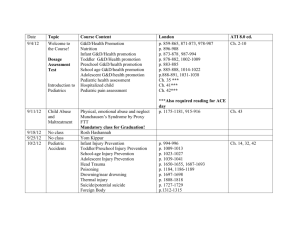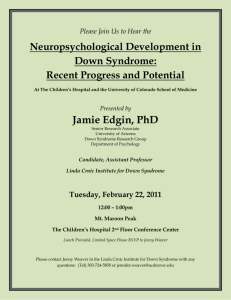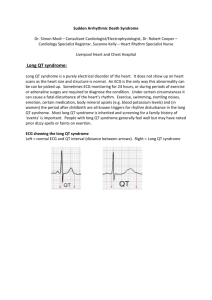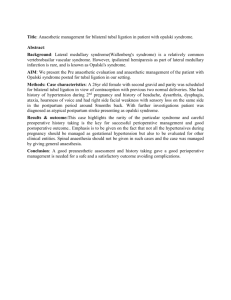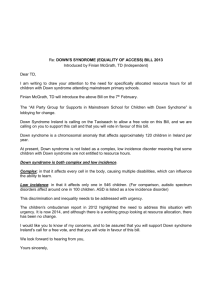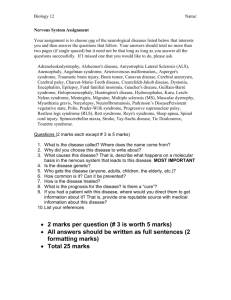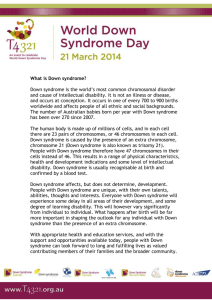Sunny Dispositions, Bright Futures (Down Syndrome)
advertisement
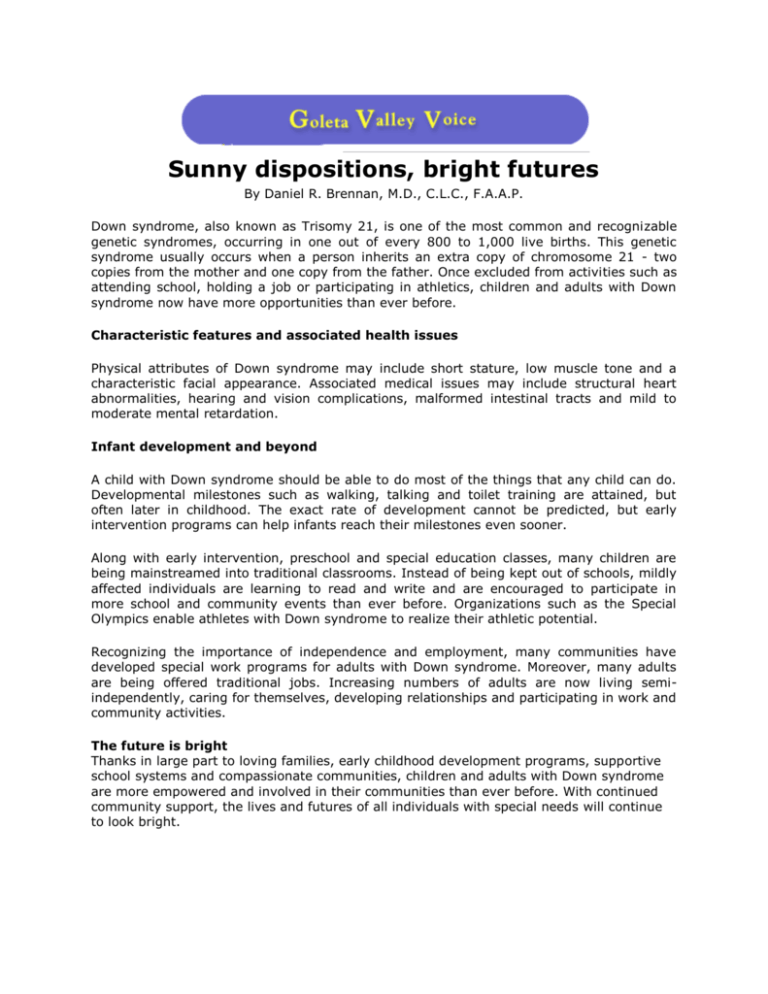
Sunny dispositions, bright futures By Daniel R. Brennan, M.D., C.L.C., F.A.A.P. Down syndrome, also known as Trisomy 21, is one of the most common and recognizable genetic syndromes, occurring in one out of every 800 to 1,000 live births. This genetic syndrome usually occurs when a person inherits an extra copy of chromosome 21 - two copies from the mother and one copy from the father. Once excluded from activities such as attending school, holding a job or participating in athletics, children and adults with Down syndrome now have more opportunities than ever before. Characteristic features and associated health issues Physical attributes of Down syndrome may include short stature, low muscle tone and a characteristic facial appearance. Associated medical issues may include structural heart abnormalities, hearing and vision complications, malformed intestinal tracts and mild to moderate mental retardation. Infant development and beyond A child with Down syndrome should be able to do most of the things that any child can do. Developmental milestones such as walking, talking and toilet training are attained, but often later in childhood. The exact rate of development cannot be predicted, but early intervention programs can help infants reach their milestones even sooner. Along with early intervention, preschool and special education classes, many children are being mainstreamed into traditional classrooms. Instead of being kept out of schools, mildly affected individuals are learning to read and write and are encouraged to participate in more school and community events than ever before. Organizations such as the Special Olympics enable athletes with Down syndrome to realize their athletic potential. Recognizing the importance of independence and employment, many communities have developed special work programs for adults with Down syndrome. Moreover, many adults are being offered traditional jobs. Increasing numbers of adults are now living semiindependently, caring for themselves, developing relationships and participating in work and community activities. The future is bright Thanks in large part to loving families, early childhood development programs, supportive school systems and compassionate communities, children and adults with Down syndrome are more empowered and involved in their communities than ever before. With continued community support, the lives and futures of all individuals with special needs will continue to look bright.




